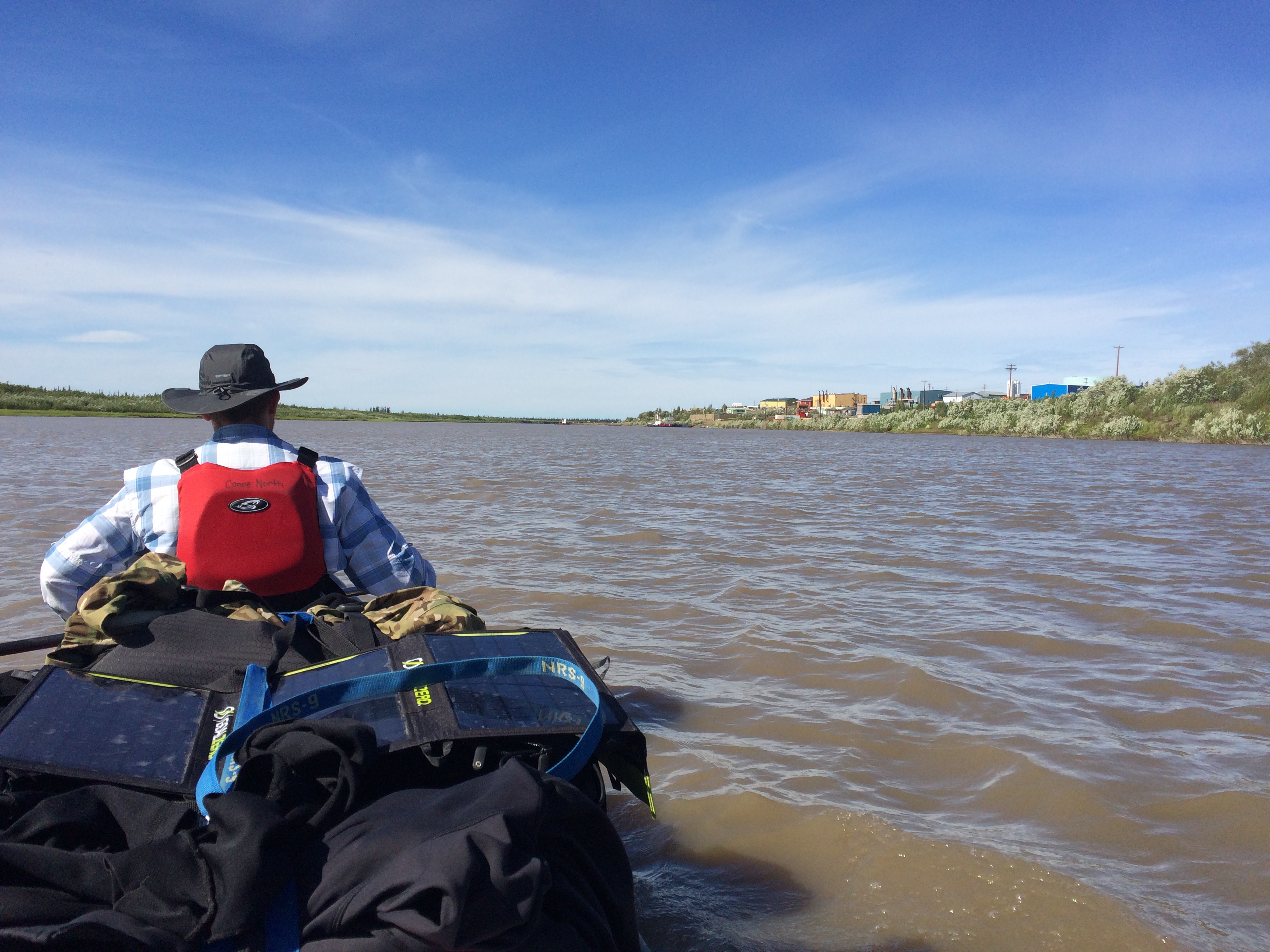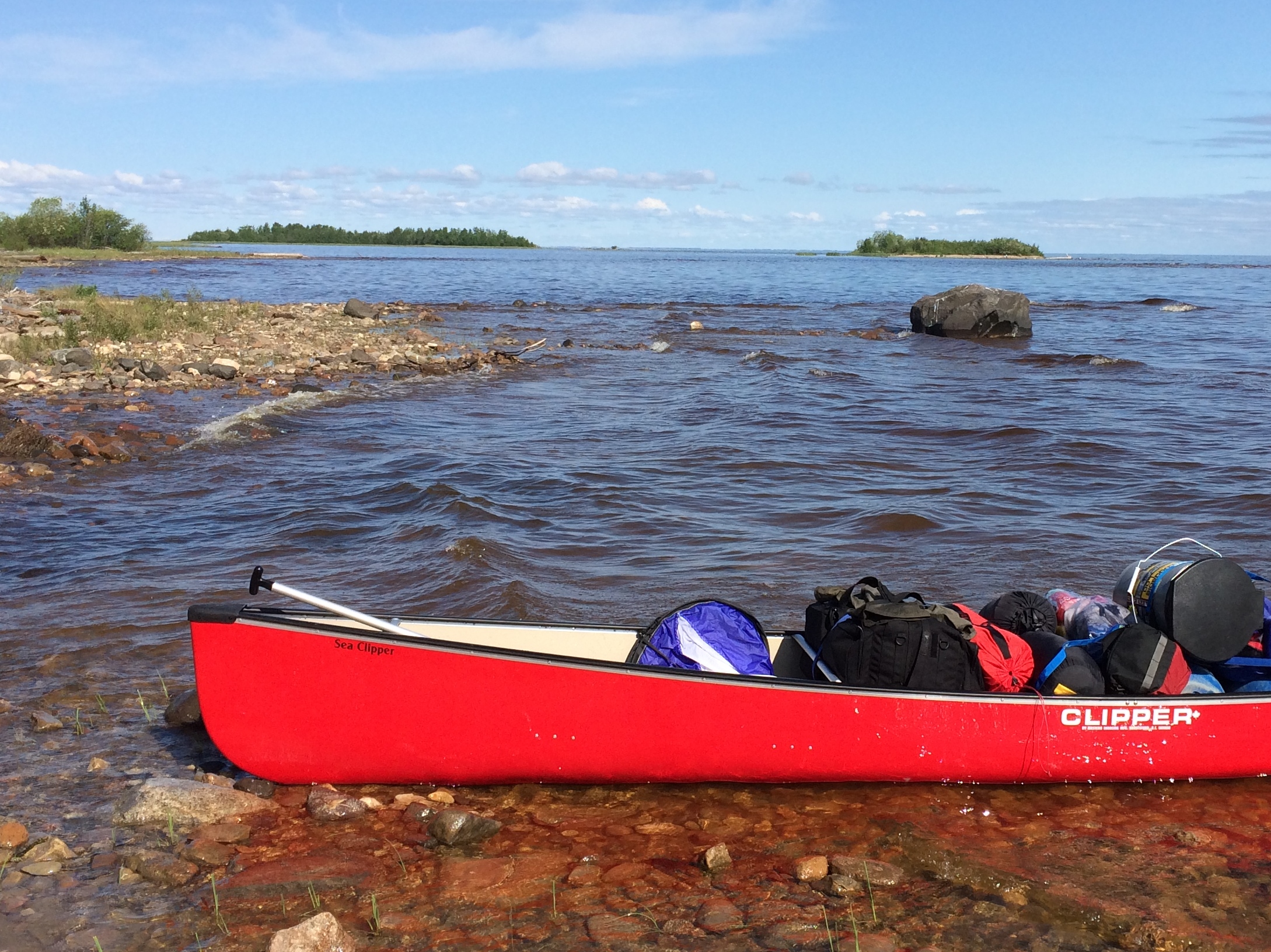
INUVIK, NWT—About a million.
That's how many paddle strokes it took me to canoe the entire Mackenzie River, 1125 miles northwest from Great Slave Lake to Garry Island in the Arctic Ocean. When you take a million paddle strokes, you have time to do the math. Forty strokes a minute, ten hours a day, forty days.
The river ends at the delta, but only in the way that a Marvel movie ends at the credits. Point Separation, where the river first begins to branch, is almost 200 miles from the coast. The thousand miles of river valley before the delta, from Fort Providence to Tsiigehtchic, mostly consists of dug-out canyon rimmed with the black spruce of the boreal forest. But when I hit rock bottom at the delta—even so far inland, elevation-wise I was only a few feet above sea level—the "end" of the river was really the beginning of a new ecosystem. And I still had another 200,000 paddle strokes to go.
I'm not sure what I was expecting. In my mind, river deltas look liked the bayou of the Mississippi or the rice patty battlefields of the Mekong in Vietnam. The Mackenzie delta is neither. Some areas are soaked wetland, but much is elevated, islands of hilly tundra so large they have their own rivers and ponds. Smooshed between two mountain ranges, the delta can only grow north, silt deposits creating more and more islands. It's the same elemental forces at work that forged Fort Simpson's small island to the south, but across a much wider canvas.
It was a world unto itself, narrow winding channels adjacent to wide flat islands that looked like the Kansas prairie.
There are two human settlements in the delta. Inuvik, "The Place of Man," is a new city of 3400 people, built by the Canadian government only in the last several decades. The traditional delta home for the indigenous peoples is a small village of 600 a few dozen miles to the west: Aklavik, "Place of the Bear." My guide to the delta was Gerry Kisoun, an Inuvialuit man who runs a small charter company out of Inuvik.
"We're the fastest warming spot in North America," Kissoun told me, speaking of the Arctic coast generally. "We can see its effects. It's a big issue."
In-ground food storage areas known as ice houses—the rough equivalent of your grandma's old root cellar—aren't cold anymore because the permafrost is thawing, and many have been abandoned. Autumn storms out of the north have grown in ferocity, and are eroding the barrier islands that protect more delicate habitat. Kendall Island, for instance, is the heart of a sanctuary protecting hundreds of bird species. But it is only a few feet above sea level, and its nesting areas are at risk.
In a development that so confounded Kissoun that he told me three times, on July 15, 2016, Tuktoyaktuk, on the coast just east of the delta, briefly boasted the warmest ocean beach in Canada.
"Twenty-two point two degrees Celsius!" he said, having committed the exact number to memory. "Can you believe it! The warmest in Canada."
Water that's a balmy 72 degrees Fahrenheit would be pleasant just about anywhere, let alone in the Arctic Circle.
I met Kissoun when he picked me up at Garry Island, a high wedge of tundra at the very edge of the delta. Kissoun couldn't get his small boat close to the shore because the water was so shallow, so I waded out to him, pulling the canoe by hand and then gratefully cross-loading my gear for the last time.
Kissoun makes few trips to the remote Garry Island, and said he had not been there in years. But in decades past, he regularly made the trip, to drop off a man he called "the ice doctor." I felt like I was having a brush with minor celebrity, because Kissoun was talking about J. Ross Mackay, one of the greatest Arctic scientists of his generation, who died in 2014 at the age of 99.
From 1954 to 2011, Mackay spent part of every year, winter and summer, in the western Arctic. He built a field cabin on Garry Island in 1964, covering the area in sensors to measure the temperature below ground. In the winter, via snowmobile, Kissoun would drop off Mackay at the cabin, retrieving him weeks later. Over the summer, Mackay's research shifted to measuring the speed of the thaw.
"They would go looking for the permafrost and have trouble finding it," Kissoun told me. "Mackay used to say, 'You can put your ear to the ground anywhere in the western Arctic, and if you wait long enough, you'll hear the earth crack.'"
Kissoun filled my head with such stories on the ride back to Inuvik, telling me of the traditional ways of his people and the scientists who study his land now. I realized I had met men and women like Kissoun all up and down the river, people who are smart on climate change and smart on the science and technology, but who still adhere to the values of their ancestors. The caribou hunt will go on, though the ways and means may change.
The midnight sun was still high in the sky by the time we returned, and I could tell that for Kissoun, the telling of the stories—sharing this history of his homeland and his affection for it—was actually the whole point of the charter service, more significant than the boat ride itself.
"Right now, you can drink that water," he said, "you can walk that hill, you can breathe that air. We want to keep it that way."






